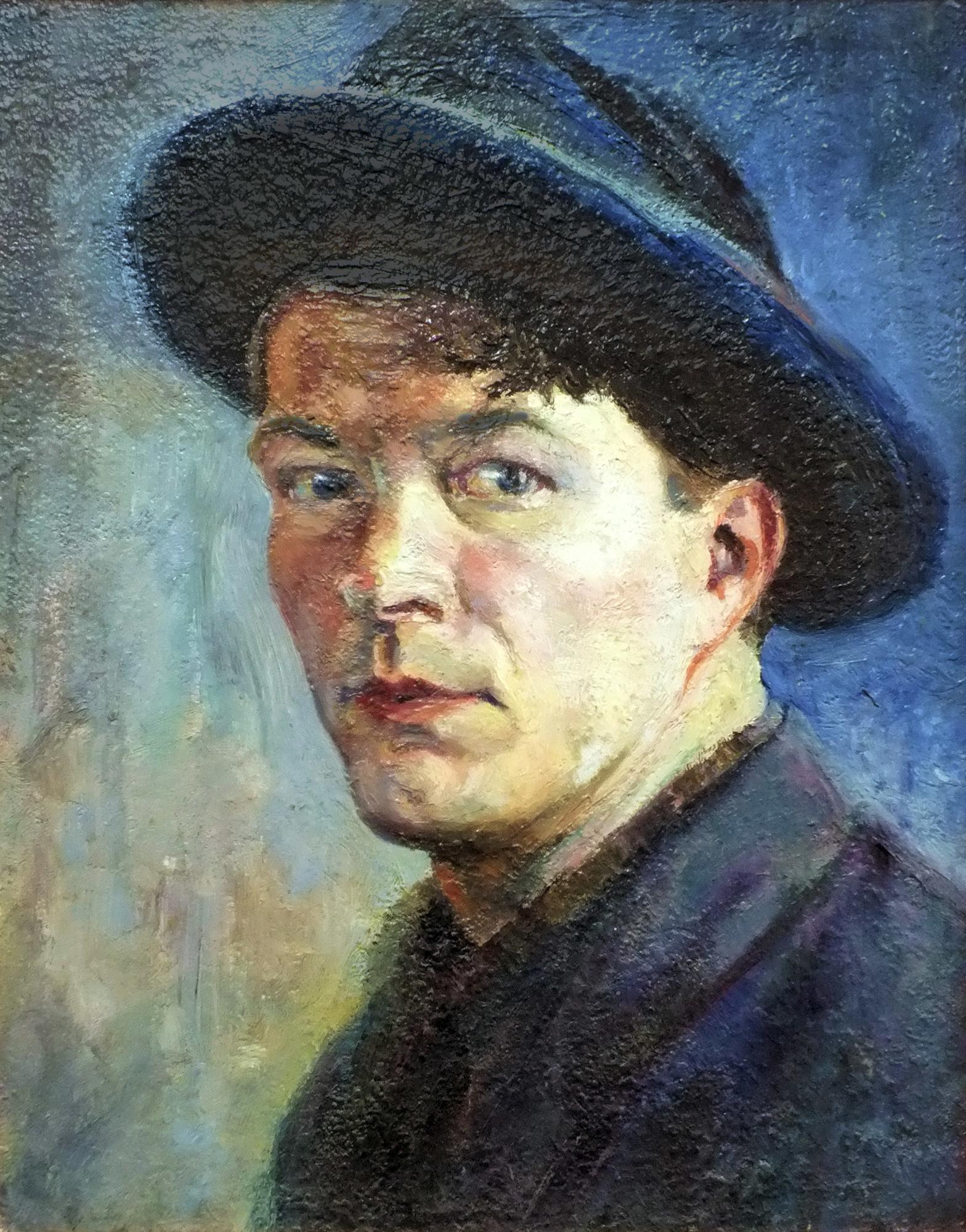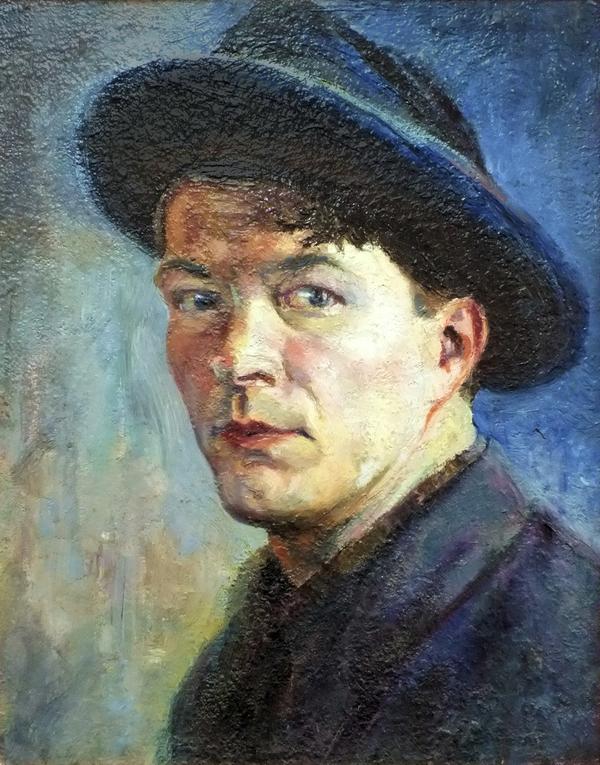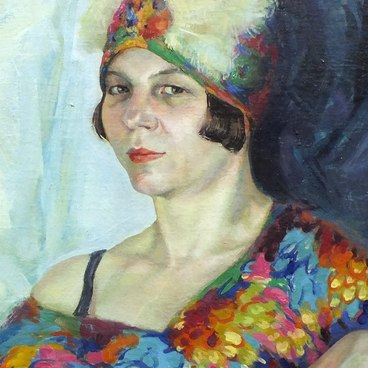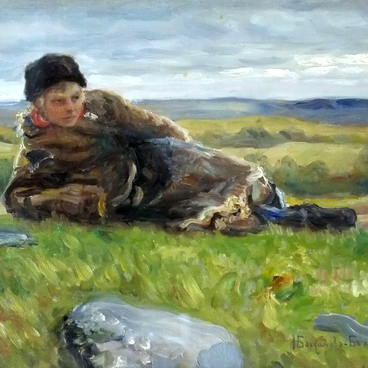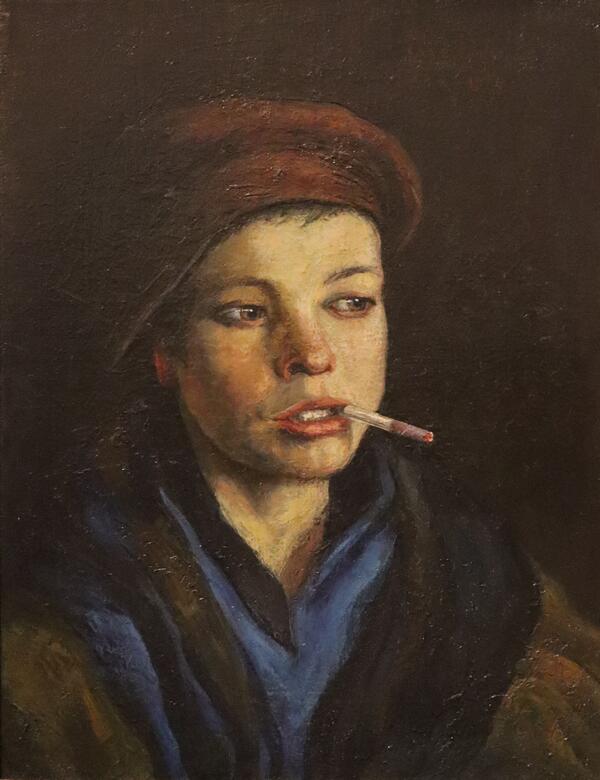‘There is way too much energy here, the joy of life really gushes forth here “, – this characteristic given to the paintings of Fyodor Bogorodsky by the first education commissioner of the RSFSR Anatoly Lunacharsky, can be easily transferred onto the artist”s personality.
A man who is passionate, who is greedy for impressions, who loves life in all its manifestations. His overpowering energy and amazing dedication could have been envied. Indeed, Bogorodsky is an artist with an unusual fate.
Since childhood, he tended to be creative: he went to art school, studied music, was fond of literature, wrote poetry and even performed in the circus under the pseudonym of Ferry.
In 1914, when the First World War broke out, Bogorodsky left his native Nizhny Novgorod for Moscow, where he entered the law faculty of Moscow University.
During his studies, he was no stranger to the art world. He had a lot of contact with futurists. He was acquainted with Velimir Khlebnikov and Vladimir Mayakovsky. In 1916 he took part in the exhibition of the Nizhny Novgorod Society of Painting Lovers.
Further creative aspirations of Bogorodsky were interrupted by the war. In 1916, despite his studies at the university, he was called up to the front. Yesterday”s student got into the Navy first, and then into the Air Force.
After the revolution of 1917 Bogorodsky joined the party, worked in the Higher Military Commission and the Revolutionary Tribunal. In 1918 he worked in the Cheka of Nizhny Novgorod region. In 1919 he volunteered for the front, went back to the Navy, this time as commissioner. He fought under Tsaritsyno. After a contusion he returned to Nizhny Novgorod, where he became head of the Art Department. Two years later he decided to get a professional art education and entered the VKHUTEMAS (Higher Art and Technical Studios) in the workshop of the famous artist Abram Arkhipov.
Creative blossom of the artist fell on the second half of the 1920s - early 1930s. At that time he painted famous portraits of street children and paintings in which he created a series of images of revolutionary sailors (Sailors in Ambush, Brother, A Friend is Found).
For successful study in the VKHUTEMAS the artist received the right to a pension (from the word “pension” - cash benefit) trip abroad. He left in 1928 and spent several years in Italy, where he studied antique art and works of old masters. The result of the trip is more than 200 paintings and sketches, including the portrait of Maxim Gorky, that survived only in reproductions.
During the Great Patriotic War, he worked as a military artist. For his painting Glory to the Fallen Heroes created in 1945 he received the Stalin Prize of the USSR.
